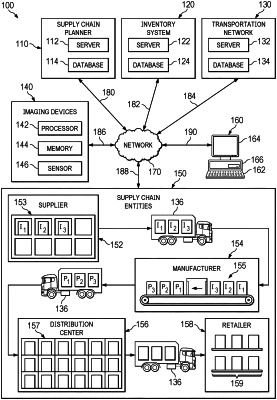| CPC G06Q 10/087 (2013.01) [G06F 17/12 (2013.01); G06F 17/13 (2013.01); G06Q 10/04 (2013.01)] | 20 Claims |

|
1. A system of solving a supply chain planning problem modeled as a linear programming (LP) problem, comprising:
a computer, comprising a processor and memory, the computer configured to:
receive a current state of one or more items in a supply chain network by one or more imaging devices that generate a mapping of the one or more items in the supply chain network;
receive an LP problem representing a supply chain planning problem for the supply chain network, the supply chain network further comprising material buffers and resource buffers;
generate a solution to the LP problem using subgradient descent with an effective dual by:
calculating the effective dual based, at least in part, on a mathematical difference of at least two dual values, each of the at least two dual values calculated by solving functional-based decomposed subproblems;
combining solutions for the solved functional-based decomposed subproblems; and
repeating the calculating and combining until a stopping criteria is met indicating a threshold of infeasibility or a threshold suboptimality; and
generating a solution to the LP problem based on the stopping criteria indicating optimality of the combined solutions; and
instruct automated machinery to adjust inventory of the one or more items based at least in part on the solution to the LP problem.
|